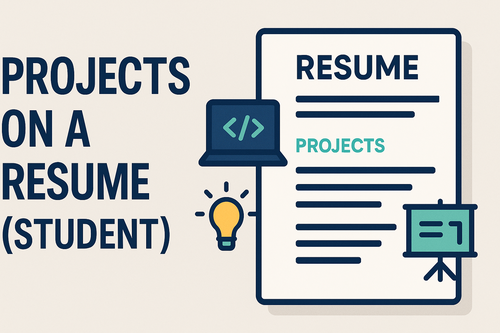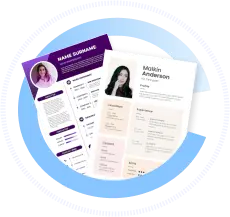Projects on a Resume (Student & Career-Change Examples)
Including projects on resume student is a powerful way for students and career changers to demonstrate skills, initiative, and relevant experience when professional work history is limited. Well-presented projects can showcase your practical knowledge and problem-solving capabilities in 2025 job markets.
| What to Do (Short Checklist) |
|---|
| List relevant academic, personal, or freelance projects |
| Highlight your role, skills demonstrated, and outcomes |
| Use measurable results or achievements wherever possible |
| Tailor projects to match job descriptions or industries |
| Format clearly for ATS and recruiter readability |
Who This Guide Is For
This guide supports students, self-taught learners, recent graduates, and professionals transitioning careers who want to leverage project experience to bolster their resumes. Whether you lack formal work history or want to highlight hands-on skills, these examples and tips are tailored for you.
Projects on a Resume (Student & Career-Change Examples) — Definition & Purpose
Projects on a resume refer to detailed descriptions of specific tasks or initiatives you have managed or contributed to, highlighting applied skills, results, and learning. They provide evidence of abilities in real-world or simulated contexts, making them especially valuable for those with limited professional experience.
Best-Practice Rules (Do / Don’t)
| Do | Don’t |
|---|---|
| Select projects that showcase relevant skills | Include unrelated projects without explanation |
| Use action verbs and quantify impact | Use vague descriptions like “worked on project” |
| Describe your specific role and contributions | List projects just by title with no detail |
| Tailor project descriptions to the job | Overload resume with too many projects |
| Keep formatting simple and ATS-friendly | Use graphics or complex layouts in this section |
Examples by Level & Industry
Student Example: Software Engineering
Mobile App Development | University Project | Jan 2025 - May 2025
- Led a team of 4 to design and build a cross-platform mobile app using React Native, improving user engagement by 25%.
- Implemented RESTful API integration to streamline data retrieval and enhance app responsiveness.
Career-Changer Example: Marketing
Social Media Campaign | Freelance Project | June 2024 - Aug 2024
- Developed and executed a content strategy for a small business, resulting in a 40% increase in Instagram followers over 3 months.
- Analyzed campaign data using Google Analytics to optimize content posting schedule and engagement.
Data Science
Predictive Analytics Model | Online Course Project | Sept 2024 - Dec 2024
- Built a predictive model using Python and scikit-learn to forecast sales trends with 85% accuracy.
- Presented findings in a detailed report, highlighting actionable insights for business decision-making.
How to Customize Projects to a Job Description
- Analyze the job posting for required skills and tools.
- Choose projects that demonstrate those skills clearly.
- Use keywords and phrases found in the job description where appropriate.
- Emphasize measurable results and relevant technologies.
- Remove or de-emphasize less relevant projects.
Formatting Tips (ATS + Readability)
- List projects under a separate “Projects” section or integrate into experience if relevant.
- Include project title, role, timeframe, and a brief description.
- Use bullet points starting with strong action verbs.
- Quantify accomplishments when possible (percentages, numbers, time saved).
- Keep the language clear and avoid jargon without explanation.
Checklist & Templates
| Projects Section Checklist |
|---|
| Are projects relevant to the target job? |
| Does each description include role, tools, and outcomes? |
| Are descriptions concise, quantified, and impactful? |
| Is the section formatted simply for easy parsing? |
| Have you tailored projects to reflect job requirements? |
Fill-in-the-Blank Template:
“[Project Title] | [Role] | [Date Range]
- [Action verb] [task or responsibility] using [tools/technologies] resulting in [measurable result or impact].”
FAQ
Q: Should I list projects if I have work experience?
A: Yes, especially if projects showcase skills or achievements not covered in your job history.
Q: How many projects should I include?
A: Typically 2-4 projects that are most relevant and impressive.
Q: Can projects be from coursework or online learning?
A: Absolutely, practical projects from courses or self-study demonstrate applied skills.


